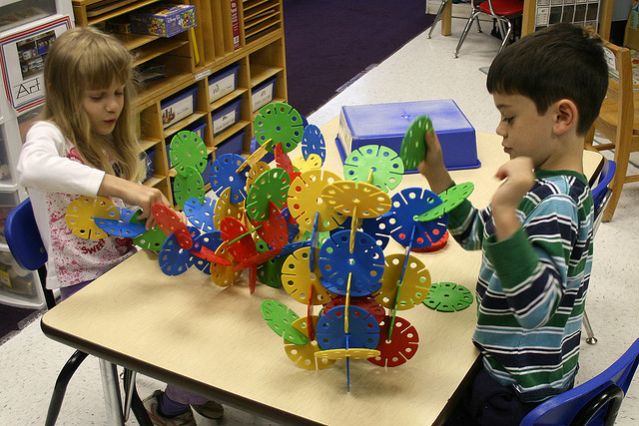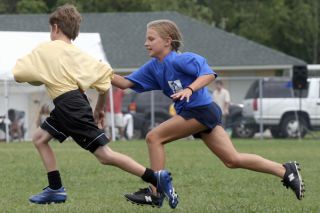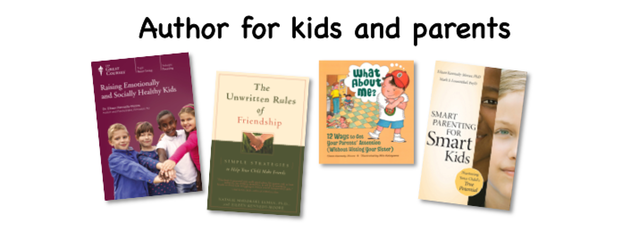Friends
Can Boys and Girls Be Friends?
Are boy-girl friendships doomed to dissolve?
Posted August 11, 2011

Q: My six-year-old daughter's closest friend happens to be a boy. They have a lot of fun together, but I've noticed that most kids her age have only same-sex friends. Why does this sex segregation happen, and what can I do to support her friendship?
Visit any school playground and you'll see it: From about age four onwards, boys mostly play with boys; girls mostly play with girls. This division increases over the early school years, and it's a world-wide pattern, found not just in the United States, but also in India, Japan, Kenya, Mexico, and the Philippines.
One reason for this separation is that boys and girls tend to play in different ways. Boys are more likely than girls to do pretend aggression and rough-and-tumble play. Girls are more likely to do make-believe play about family or school interactions. Boys spend more time competing whereas girls spend more time talking. Up to age 7, boys tend to be friends with a few other boys, whereas girls play with a whole group of girls, but after age 7, boys tend to hang out in larger groups whereas girls gravitate towards a few best friends. Playing separately maintains and increases differences in how boys and girls interact.
Group differences between boys and girls are interesting, but your particular child won't necessarily fit these average patterns. There are plenty of boisterous girls and gentle boys. In fact, one study found that 80% of boys were indistinguishable from 80% of girls in their amount of rough play. Also, the fact that sex roles are less rigid than they used to be opens the way to more opposite-sex friendships at every age.
While it's more typical for children to stick to their own sex when it comes to friendship, many children do have friendships with members of the opposite sex. Boy-girl friendships are most likely to occur outside of school. Often these friendships come about because the kids are neighbors, or their siblings are friends, or the families enjoy spending time together. These friendships can provide a very healthy basis for later male-female relationships. They enable children to see members of the opposite sex as regular people rather than as mysterious, different, and even frightening "others."

Here are some ideas about how you can support your child's boy-girl friendship:
- Be matter of fact about the friendship.
Treat it as you would any other friendship. Don't tease your child about having a boy friend or girl friend, because that will make your child feel self-conscious.
- Include the opposite-sex friend in family outings.
This is a great way to support the friendship and not make it seem like "dating."
- Equip your child to handle teasing.
If your child is being teased about the friendship, you may need to help your child learn and practice some low-key responses. If other kids ask, "Is that your girl friend?", your child could say, "No, she's my pal" or "She's a friend who happens to be a girl." If they say, "Chris likes you!", your child could say, "So what?" If they giggle and chant about sitting in a tree K-I-S-S-I-N-G, your child can just roll her eyes and say "Grow up!" in a bored tone of voice.
- Make sure your child has some same-sex friends.
Because of peer pressure, opposite sex friendships can be fragile. If there is a break in the friendship, you want to make sure your child has other social options.
Does your child have an opposite-sex friend? Did you when you were growing up?
Related posts:
Make New Friends But Keep The Old...Or Not
Children's Growing Friendships
__
© Eileen Kennedy-Moore, PhD. Google+ Twitter: psychauthormom
Eileen Kennedy-Moore, PhD, is an author and clinical psychologist in Princeton, NJ (lic. # 35SI00425400). She frequently speaks at schools and conferences about parenting and children’s social and emotional development. www.EileenKennedyMoore.com
Subscribe to Dr. Kennedy-Moore’s monthly newsletter to be notified about new posts on the Growing Friendships blog.

Dr. Kennedy-Moore's books and videos:
-- Have you ever wanted a parenting course you could do at YOUR convenience?Check out this fun and fascinating audio/video series on children’s feelings and friendships from The Great Courses®: Raising Emotionally & Socially Healthy Kids. || Topics include: Teaching Kids to Care; Developing Genuine Self-Esteem; How Kids Manage Anxiety and Anger; Playing Well With Others; Growing Up Social in the Digital Age. VIDEO preview.
On sale 70% OFF at: www.TheGreatCourses.com/Kids
-- Smart Parenting for Smart Kids: Nurturing Your Child's True Potential || Chapters include: Tempering Perfectionism; Building Connection; Developing Motivation; Finding Joy. VIDEO preview.
-- The Unwritten Rules of Friendship: Simple Strategies to Help Your Child Make Friends || Chapters include: The Shy Child; The Little Adult; The Short-Fused Child; The Different Drummer.
-- What About Me? 12 Ways To Get Your Parents' Attention Without Hitting Your Sister. VIDEO preview.
Growing Friendships blog posts are for general educational purposes only. They may or may not be relevant for your particular situation. You’re welcome to link to this post, but please don’t reproduce it without written permission from the author.
photo credit: “play is good” by woodleywonderworks / CC BY 2.0
“_MG_4815” by kelsey e. / CC BY 2.0
_
For further reading:
Apter, T. & Josselson, R. (1999). Best friends: The pleasures and perils of girls' and women's friendships. New York: Three Rivers Press.
Dunn, J. (2004). Children's friendships: The beginnings of intimacy. New York: Wiley-Blackwell.
Jacklin, C. N. (1981). Methodological issues in the study of sex-related differences. Developmental Review, 1, 226-273.
Whiting, B. B. & Edwards C. P. (1988). Children of different worlds. Cambridge, MA: Harvard University Press.




